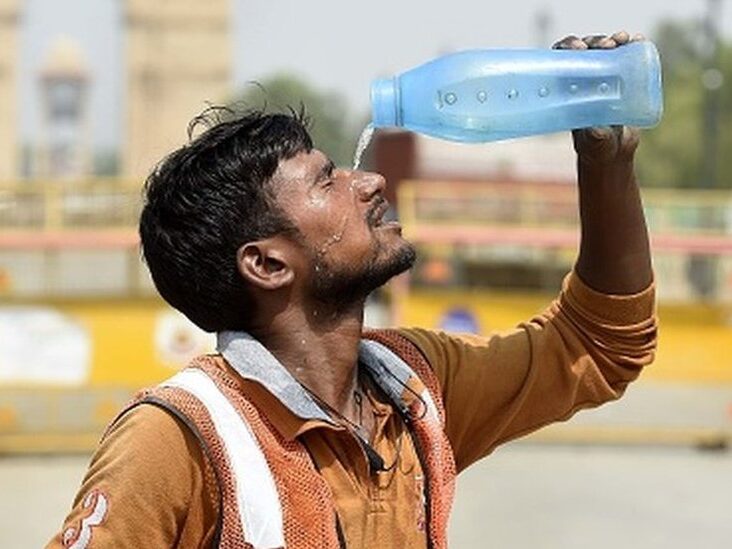The world is facing a dual challenge: an aging population and a warming climate. This combination is creating a perfect storm, putting millions of older adults at increased risk of heat-related illnesses and death.
How the Heat Wave is a threat to older adults
The deadly heat wave that gripped Asia in April and May 2024 is a stark reminder of the dangers. Similar events have been witnessed in the US and Europe, highlighting the global nature of this threat.
Why Older Adults are Vulnerable

Several factors make older adults particularly susceptible to heat stress:
- Physiological Changes: As we age, our bodies become less efficient at regulating temperature. Sweat glands become less active, and the ability to sense and respond to heat changes diminishes.
- Chronic Health Conditions: Older adults are more likely to have underlying health conditions like heart disease, diabetes, and lung disease, which can be exacerbated by heat stress.
- Medications: Many medications can affect the body’s ability to regulate temperature or sweat, further increasing the risk of heat-related illness.
- Cognitive Decline: Older adults with cognitive decline may not recognize the signs of heat stress or be able to take the necessary precautions to stay cool.
A Growing Problem:
The number of older adults is projected to double by 2050, reaching 2.1 billion globally. This, coupled with rising temperatures, means that ever-increasing numbers of vulnerable individuals will be exposed to intensifying heat.
The research shows that by 2050, over 23% of the world’s population aged 69 and older will be living in regions where peak temperatures routinely surpass 99.5°F (37.5°C), compared to just 14% today. This translates to an estimated 250 million additional older adults facing dangerously high temperatures.
Mapping the Risks:
Most of these older adults live in lower- and middle-income countries with limited access to essential services like electricity, cooling appliances, and safe water. This lack of resources exacerbates the dangers of extreme heat.
Even in historically cooler regions, rising temperatures will be a significant driver of heat exposure for older adults. In hotter regions, population growth and increasing longevity will further amplify the risks.
The Devastating Effects of Heat on Older Adults:
Extreme heat can have severe consequences for older adults, including:
- Worsening of Age-Related Health Conditions: Heat stress can exacerbate heart, lung, and kidney disease and can even lead to delirium.
- Dehydration: Older adults don’t sweat as efficiently as younger people, making them more susceptible to dehydration, especially when compounded by certain medications. Dehydration can lead to weakness, dizziness, and increased risk of falls.
- Respiratory Issues: Poor air quality during heat waves can worsen breathing difficulties, particularly for those with pre-existing lung conditions like COPD.
- Sleep Disruption: Nighttime heat can significantly disrupt sleep, which is crucial for overall health and well-being. This can lead to increased depression and confusion during waking hours.
- Medication Degradation: Medications can lose their effectiveness if stored in excessively hot environments.
Beyond Physical Risks:
The emotional and social impacts of extreme heat on older adults are also significant. Being confined indoors during heat waves can lead to boredom, depression, and social isolation.
Those with physical limitations or lack of access to transportation may struggle to reach cooling centers or find relief in green spaces like parks.
Systemic Cooling Poverty:
These threats are particularly severe in low- and middle-income nations, where older adults often face substandard housing, limited access to healthcare, and a lack of resources to stay cool during heat waves which is known as systemic cooling poverty.
Taking Action:
- Implement strategies to reduce greenhouse gas emissions and mitigate climate change.
- Develop comprehensive heat action plans to protect vulnerable populations.
- Invest in early warning systems, cooling centers, and accessible transportation for older adults.
- Expand power grids and provide financial assistance for cooling appliances in low-income communities.
- Stay informed about heat advisories and take precautions to stay cool.
- Stay hydrated and seek shade during peak heat hours.
- Check in on vulnerable neighbors and relatives.

A Global Challenge:
The challenges posed by extreme heat and an aging population require international collaboration and tailored solutions for different regions. Wealthier nations can invest in infrastructure and public services, while low- and middle-income countries need systemic changes to improve housing, healthcare, and access to essential resources. The World Health Organization and Pan American Health Organization emphasize the critical need for global action to prepare communities for the rising heat and protect vulnerable populations. By heeding their call and implementing effective strategies, we can save lives and ensure the well-being of older adults in a warming world.



